Lau ghonto recipe is an authentic and delectable Bengali niramish recipe which is hugely popular in Bengal. It is a pure comfort dish which is prepared in almost every Bengali house. It is a no onion and no garlic recipe which makes it a perfect dish for niramish days. In this preparation, bottle gourd aka lau is cooked with peas and crispy fried daler bori aka sun-dried lentil tear droplets in minimal spices and coriander leaves. It is a perfect side to accompany with piping hot Steamed Rice and dal.
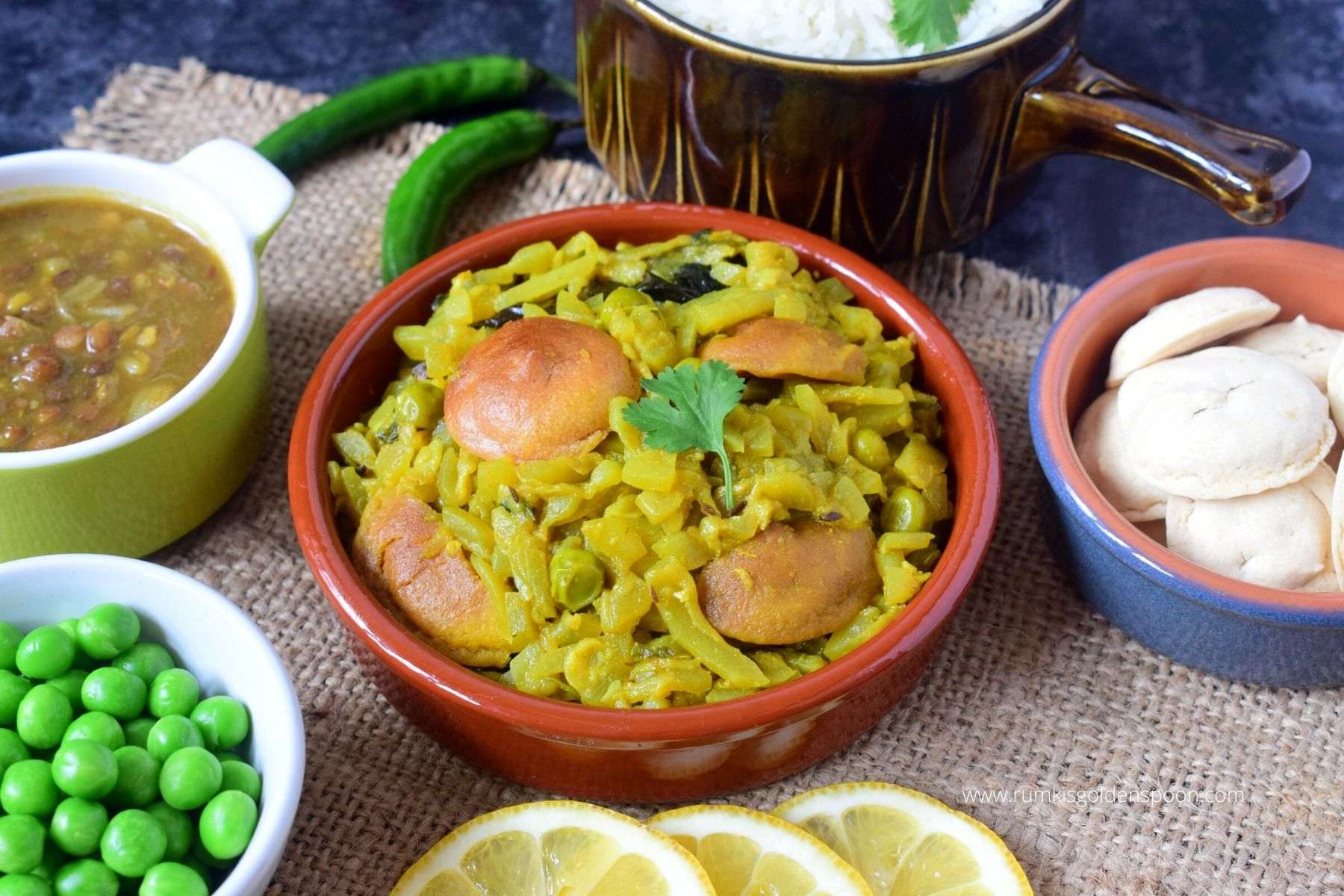
Table of Contents
About the recipe
Health Benefits of Bottle Gourd
How to make Lau Ghonto (step wise photos)
Recipe Card
What is Lau Ghonto?
Lau ghonto is a pure Bengali delicacy and the name of the recipe itself explains the dish. The word ‘Lau’ stands for bottle gourd and ‘Ghonto’ means mushy curry. Basically, ghonto is a Bengali speciality in which vegetables are cut into small length thin strips and cooked as a dry curry aka mishmash.
Lau er ghonto is prepared in two ways – vegetarian and nonvegetarian.
For nonveg lau er ghonto, normally prawns, fish head or small fishes are added into it.
For pure vegeterian aka niramish lau ghonto, it is prepared in different ways, like using daler bori or moong dal or sometimes only using peas. Today, I am going to share the most popular vegetarian version aka bori diye lau ghonto with you.
Lau ghonto recipe bengali is one of my favourite niramish recipes since childhood. I know it’s weird because bottle gourd is considered as one of the most boring vegetables which children don’t even want to try. But I can bet this Bengali version bottle gourd recipe is an exception.
A bowl of lau ghonto with Plain rice, dal and jhuri aloo bhaja is more than a comfort meal and just like a bliss. I am pretty sure many people are in the same side with me. If you have never tried it then I recommend you try it at least once.
My mom used to prepare this bori diye lau ghonto on Saturdays which is usually the vegetarian day of the week in our house when onion, garlic and even masoor dal is prohibited with nonvegetarian food. I still remember how much I used to love the dish that I had my full plate of rice without any drama.
Many people think that Bengali cuisine is full of different varieties of fish recipes and every Bengali eats only nonvegetarian dishes like fish curry, mutton kosha etc. But Bengali cuisine is a treasure of vegetarian dishes and every Bengali is very fond of these dishes. There are myriad lip smacking niramish recipes are there in this rich cuisine and aloo posto, bandhakopi ghonto, kochu bata, mocha ghonto, chanar dalna, lau ghonto etc. are the few finest examples of it.
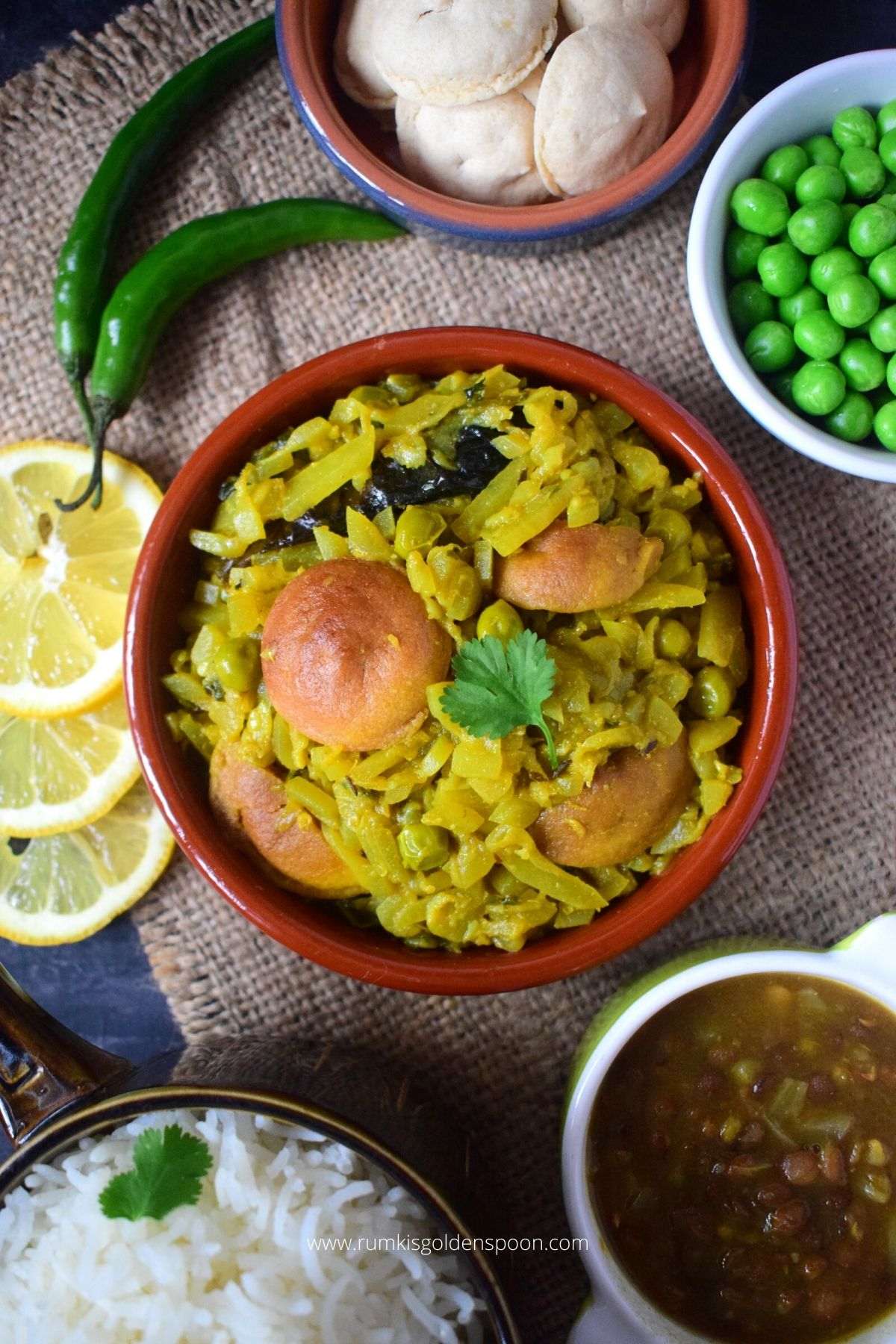
Lau er ghonto is a very lite and healthy recipe where you would require minimal spices to prepare it. From kids to elders, this recipe is suitable for everyone and it could be a healthy and delectable addition to your regular diet. Lau ghonto is a pure Bengali delicacy and you will definitely get the essence of Bengal in it.
Lau ghonto recipe bengali is a very simple and easy recipe. The difficulty level of cooking the dish is low and can be suitable for a novice. It requires very limited ingredients which are easily available in any Bengali kitchen pantry except daler bori. It is quite difficult to get daler bori outside east India. I have used homemade biulir daler bori for the recipe. You can check my previous post to get the recipe.
Lau ghonto recipe with step by step photos and instructions have been provided in the ‘Instructions’ section of the recipe. If you follow my recipe precisely then you will get the perfect lau er ghonto on your plate. But before directly jumping into the recipe, let me share few interesting facts about the hero ingredient of the recipe ‘Lau’ aka ‘Bottle gourd’ and the recipe
Health benefits of bottle gourd
- Bottle gourd is very low in fat and cholesterol which is good for weight loss.
- Bottle gourd is full of dietary fibre which is good for the digestive system and helps to get rid of piles, constipation etc.
- It is full of nutrients and vitamins which are good for nourishing the body.
- It is full of potassium, sodium which helps to regulate the blood pressure and is good for the heart health as well.
- It is a good source of iron and full of antioxidants.
- Bottle gourd is full of water approximately 96% which helps the body to cool down.
Popularity of Lau Ghonto
- Lau ghonto is easy to make and gets prepared without much hustle.
- It is a very healthy and lite dish prepared using minimal spices.
- Its kids friendly and a perfect way to make your kids eat bottle gourd.
- Its vegan and gluten free.
- Bori diye lau ghonto is a no onion no garlic recipe which is perfect for puja days aka niramish days.
How to cut bottle gourd for lau ghonto?
Bengalis are very particular about cutting vegetables for different types of dishes. For each of chorchori, dalna, ghonto preparations, they cut the vegetables differently in a specific way.
For any ghonto preparation, Bengalis cut the vegetables into small and thin strips like match sticks.
First take a large bowl of water and then peel the bottle gourd and cut them into halves, both in vertical and horizontal direction. Cut each portion into thin slices like semi circles. Then gather few semi-circular pieces and cut them into thin strips in vertical direction. Gather the strips and put them into the large bowl of water. Repeat the process and cut the complete bottle gourd and wash the pieces nicely.
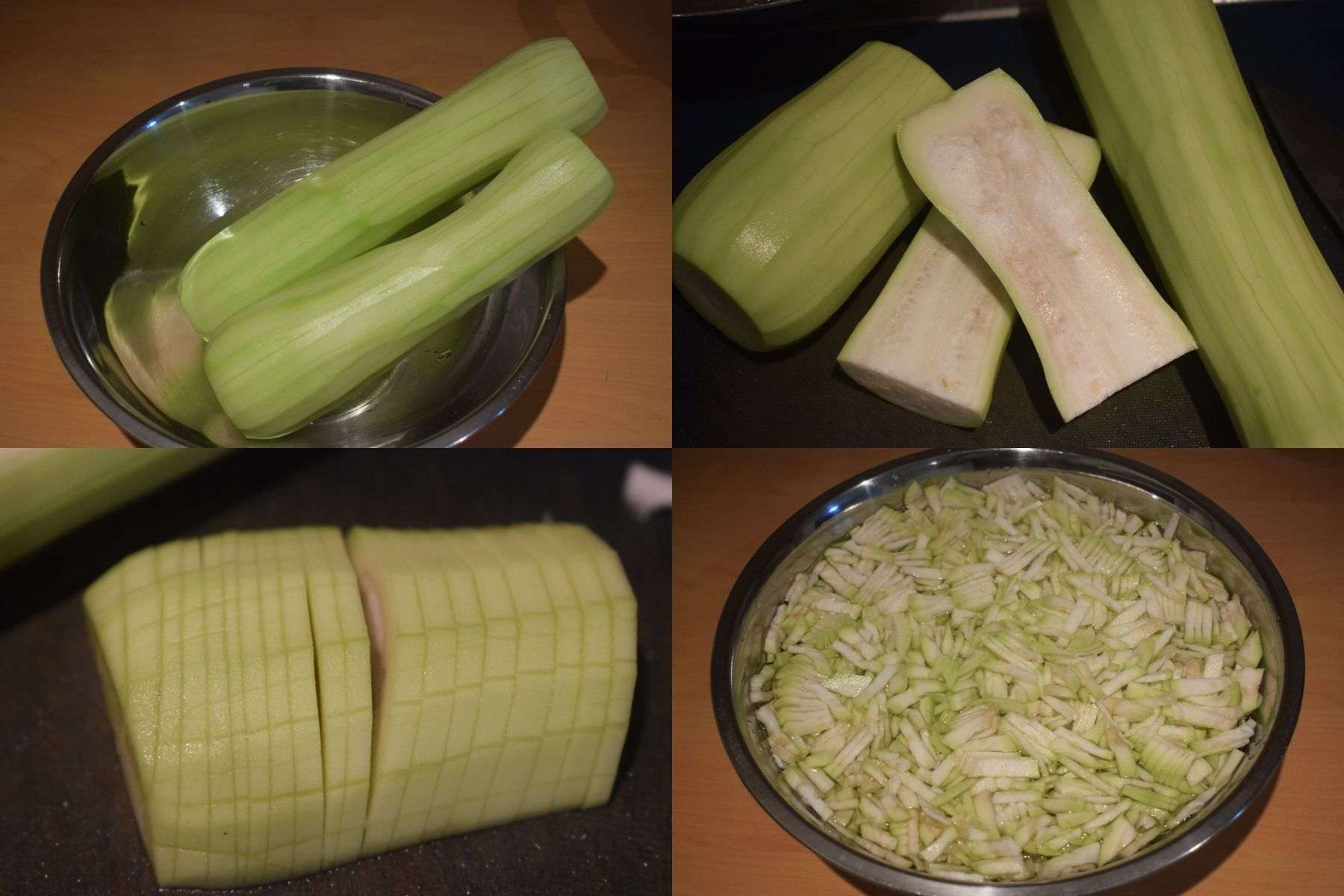
How to make Lau Ghonto?
To prepare the lau ghonto recipe Bengali, first cut the bottle gourd into thin small strips and wash them once. Then drain the water and keep it aside.
On the other hand, put a pan on flame and add mustard oil into it. Usage of mustard oil enhances the flavour and taste of the dish. Once the oil is hot, add the daler bori into it and fry them till golden brown and keep them aside. You can check my homemade daler bori recipe in my previous post.
In the same pan, add oil if required and add dry red chilli, bay leaf and cumin seeds into the pan for tempering and let them crackle.
Then add the bottle gourd pieces into the pan and give a nice stir. Cook it over medium flame for 5 minutes. Add ginger paste into the pan and mix it well. Cook it in low flame for 2-3 minutes until the raw smell of ginger goes away.
After this, add green peas into the pan and give a nice mix. Add salt, turmeric powder and mix them nicely. Add green chillies and cover the pan. Cook it in low flame for approximately 20 minutes until the bottle gourd gets cooked completely in its own juice. Stir in between once or twice. Lau ghonto is a slow cooking recipe and it tastes great when cooked in low flame.
Take off the lid of the pan and give a stir. Add cumin powder and mix it well. Cook it in low flame for another 2-3 minutes.
Add sugar, coriander powder, one by one into the pan and give a nice stir. Add the fried daler bori into the pan. I have broken few of them for extra flavour. Give a gentle stir and cover the pan. Cook it in low flame for another 5 minutes and then switch off the flame.
Many Bengali veg recipes have already been shared in my previous posts. You can check few of them like
Chanar dalna
Bandhakopi ghonto
Dry Shorshe Begun
Aloo Posto
Jhinge-Aloo Posto
..And Many more…
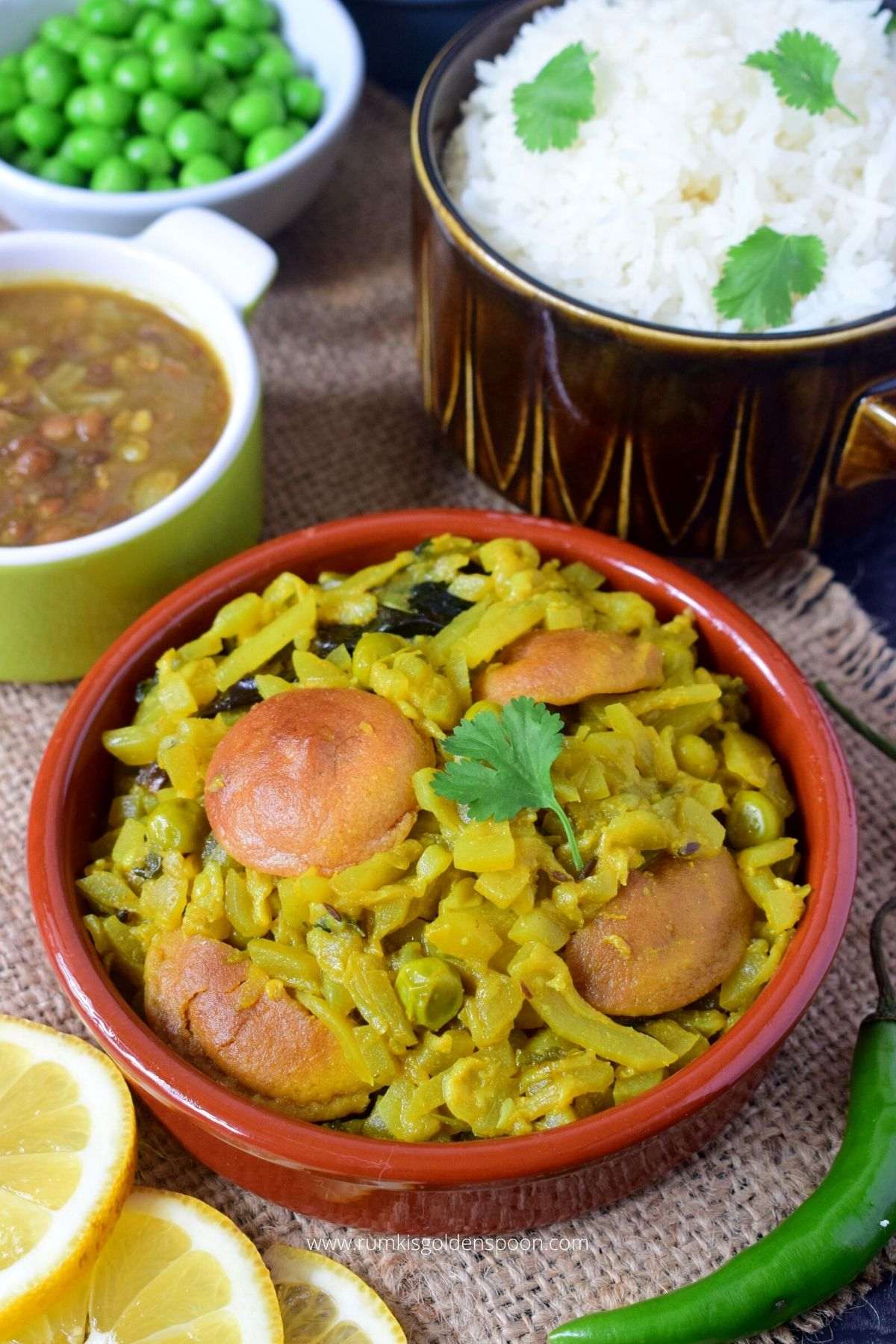
Ingredients:
- 1 Kg Bottle gourd (Lau), peeled and cut into thin strips
- 12-15 Baler bori (Sun dried lentil tear droplets)
- ¼ cup Peas, fresh or frozen
- 1 teaspoon Ginger paste
- 2 green Chillies
- 2-3 tablespoons Coriander leaves, chopped
- ½ teaspoon Cumin seeds (Jeera)
- 1 dry red Chilli (Shokno lanka)
- 1 Bay leaf (Tejpatta)
- 1 teaspoon Turmeric powder
- 1 teaspoon Cumin powder
- 2 teaspoons Sugar
- Salt to taste
- 3 tablespoons Mustard oil
Instructions:
- Cut the bottle gourd into thin small strips and wash them once. Then drain the water and keep it aside.
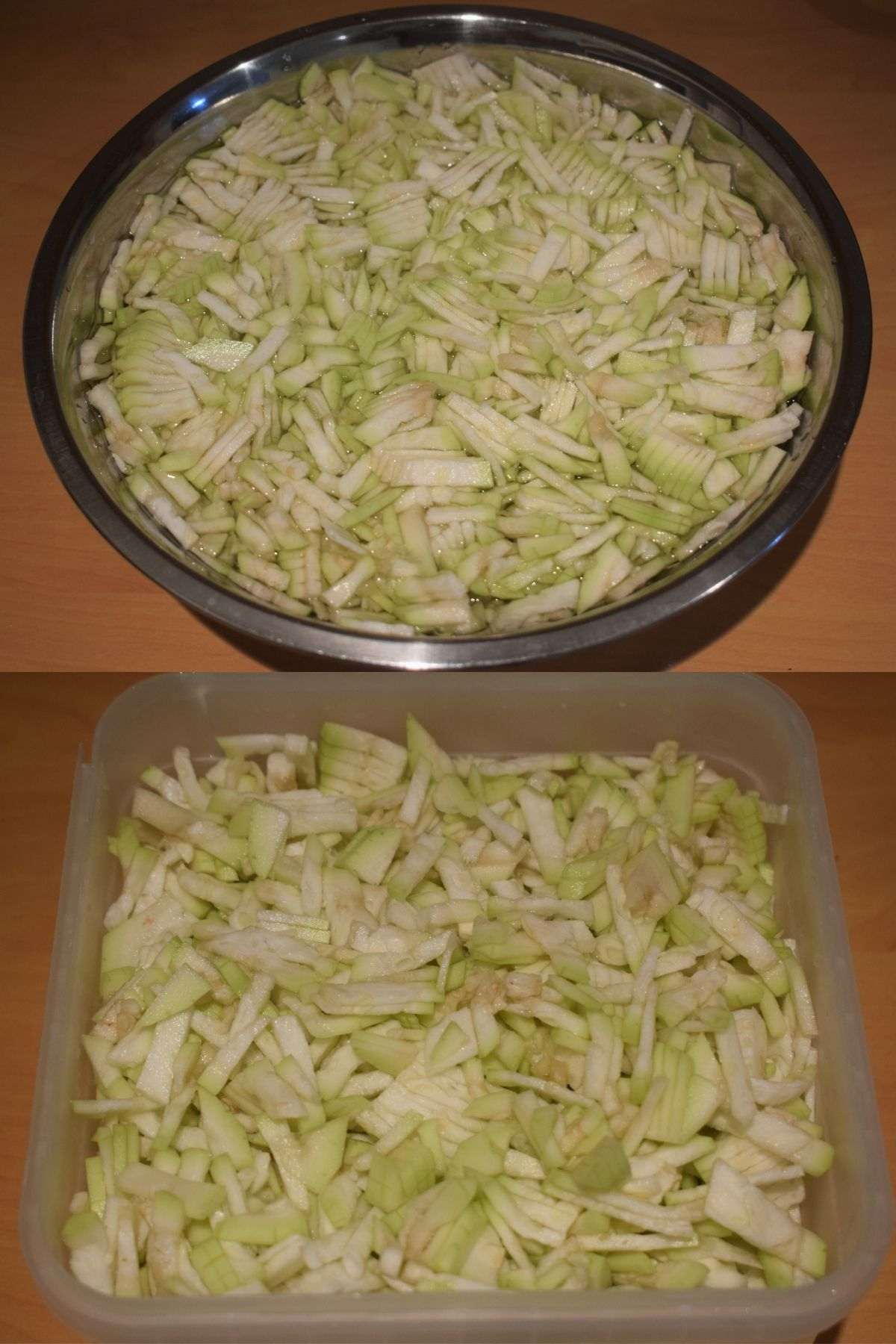
- On the other hand, put a pan on flame and allow it to become completely dry.
- Add 3 tablespoons of mustard oil into it. Once the oil is hot, add the daler bori into it and fry them till golden brown and keep them aside.
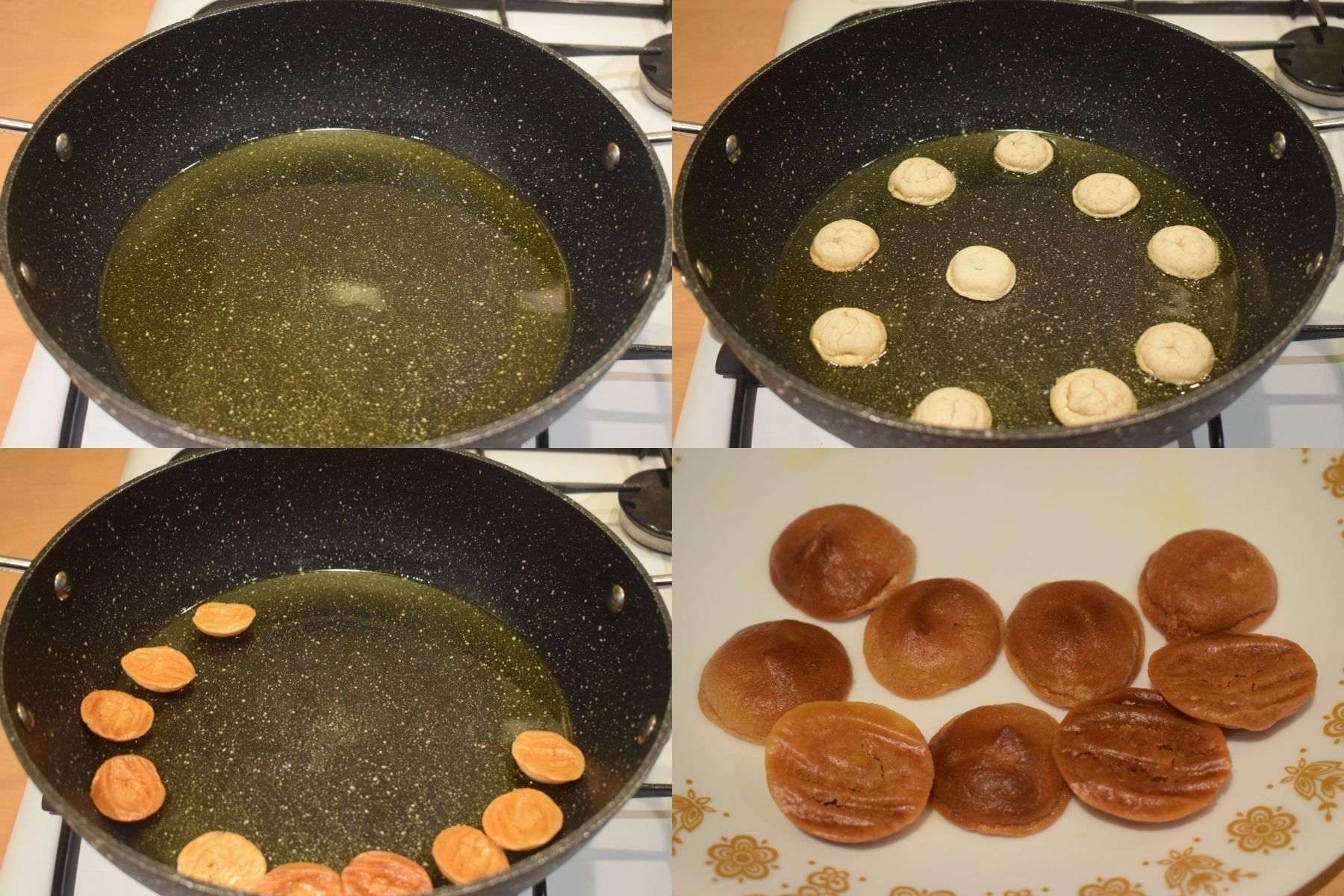
- In the same pan, add oil if required and add 1 dry red chilli, 1 bay leaf and ½ teaspoon cumin seeds into the pan for tempering and let them crackle.
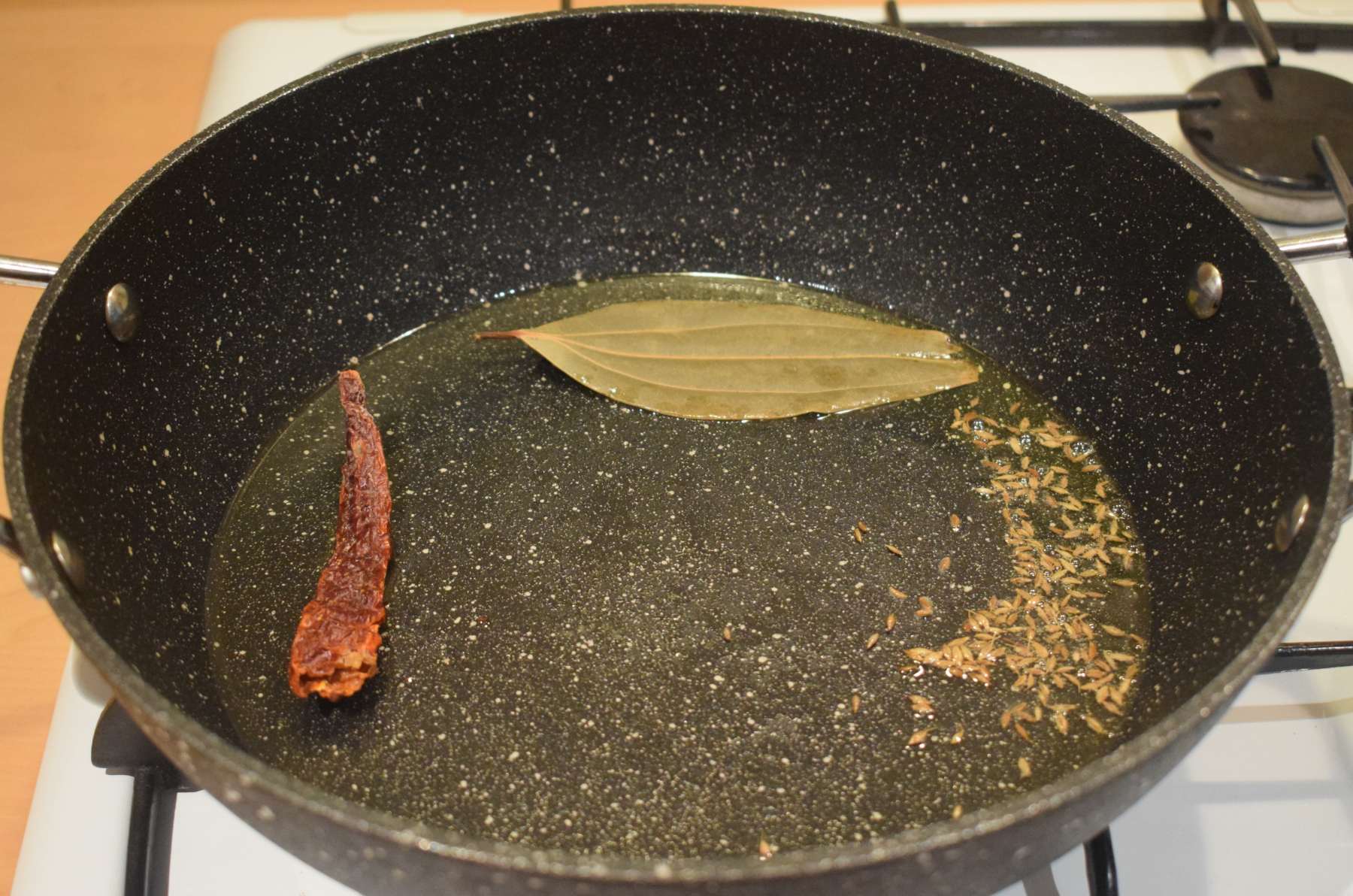
- Add the bottle gourd pieces into the pan and give a nice stir. Cook it over medium flame for 5 minutes.
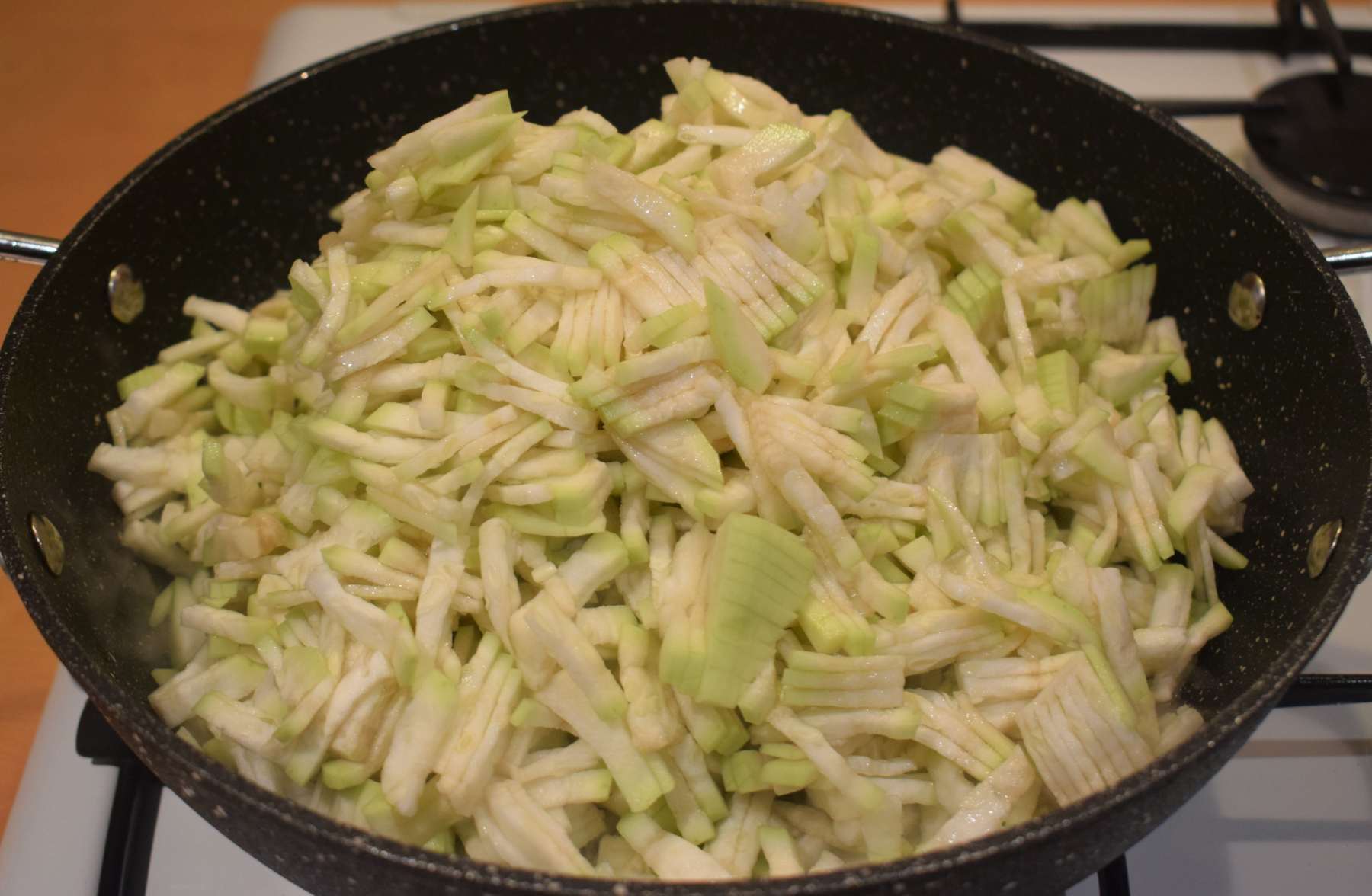
- Add 1 teaspoon ginger paste into the pan and mix it well. Cook it in low flame for 2-3 minutes until the raw smell of ginger goes away.
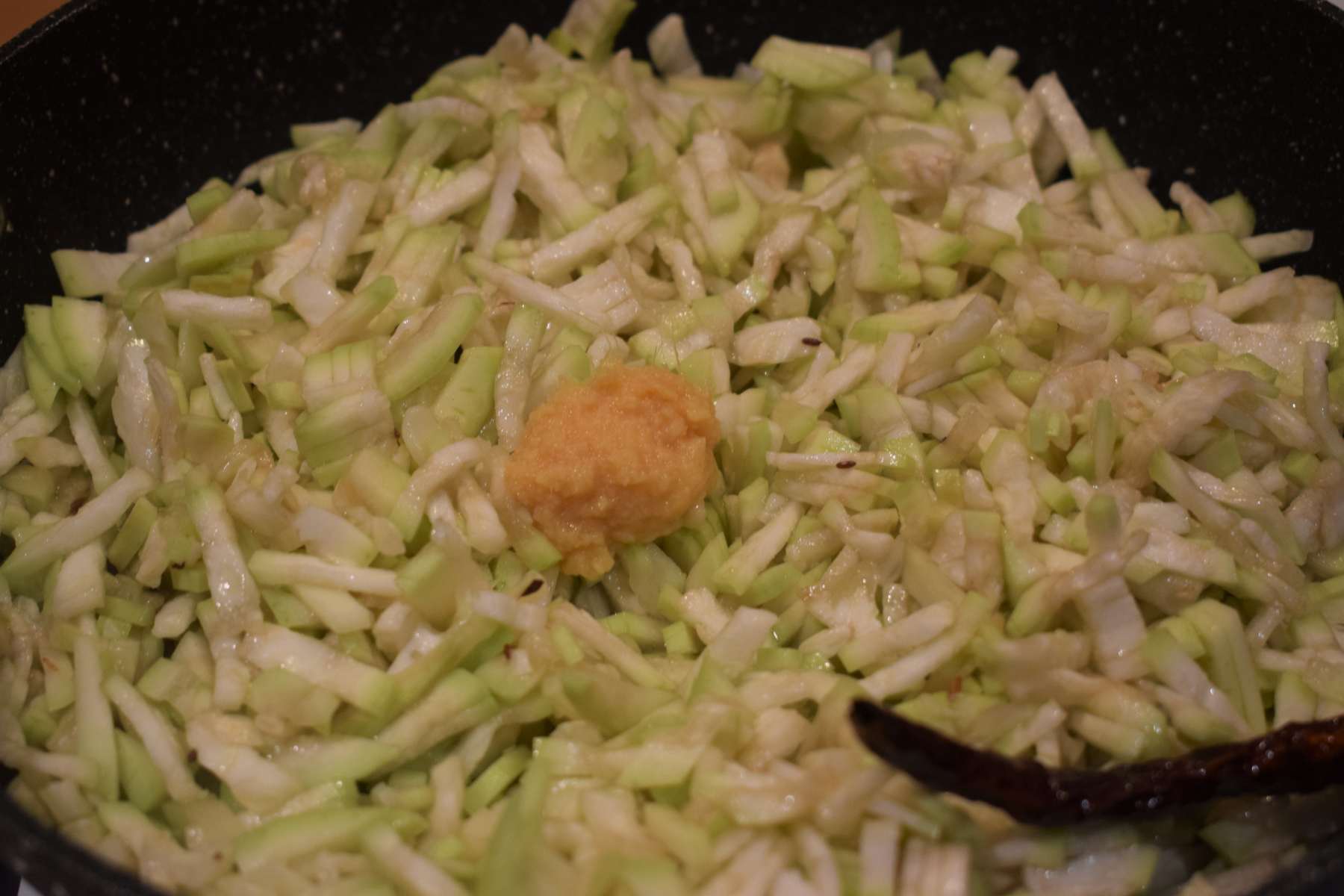
- Add ¼ cup green peas into the pan and give a nice mix.
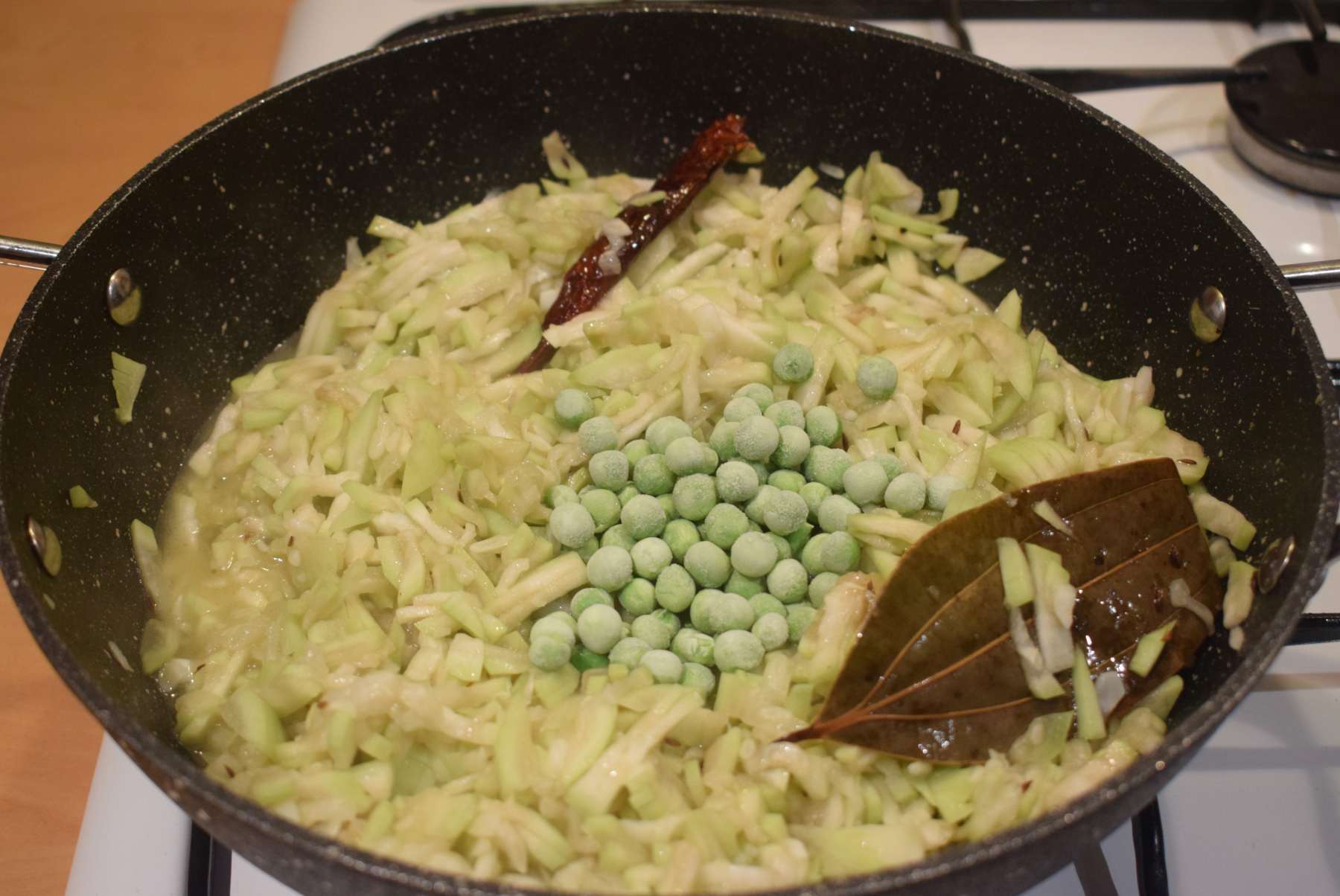
- Add salt, 1 teaspoon turmeric powder into the pan and mix them nicely.
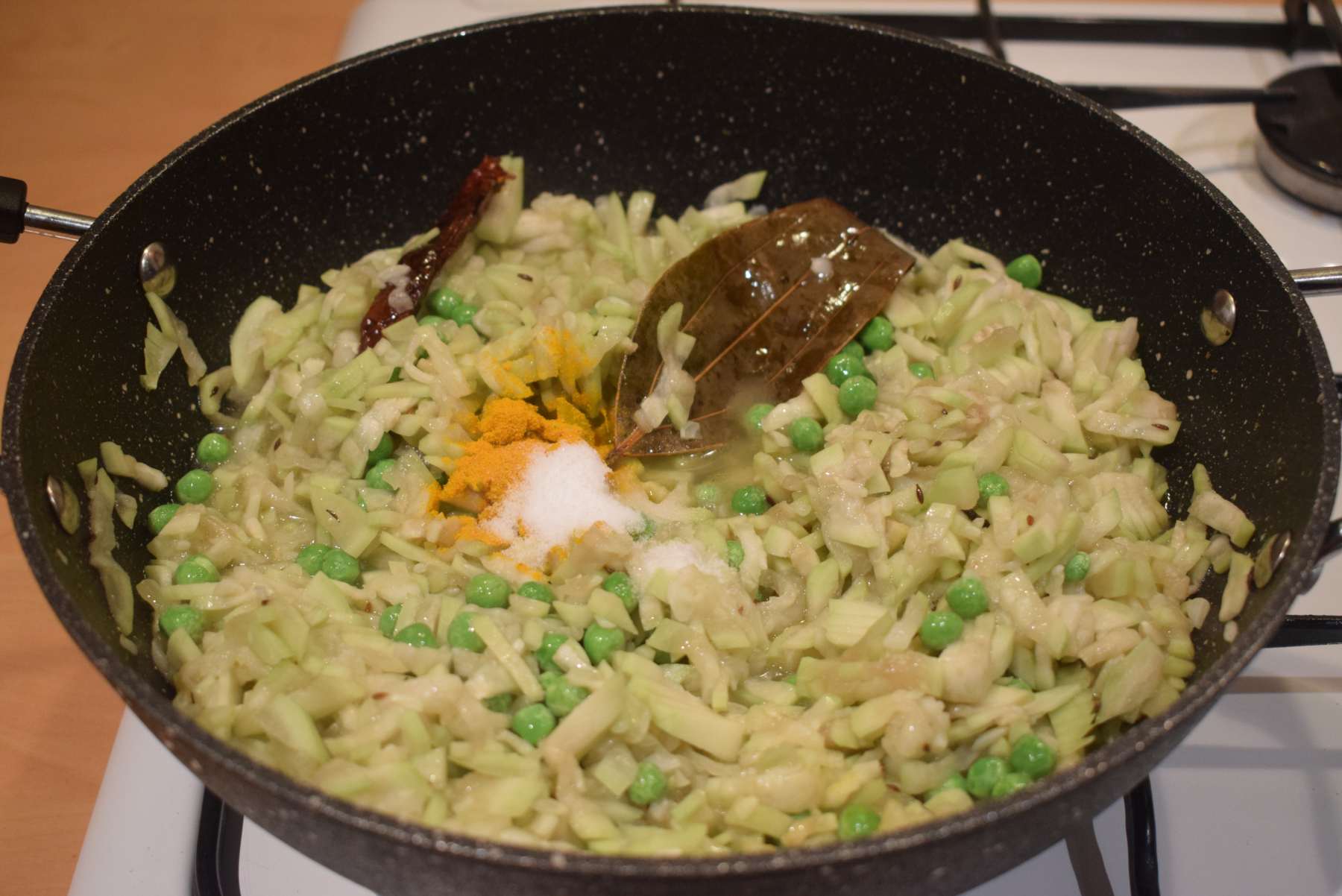
- Add green chillies into the pan and cover the pan. Cook it in low flame for approximately 20 minutes until the bottle gourd gets cooked completely in its own juice. Stir in between once or twice.
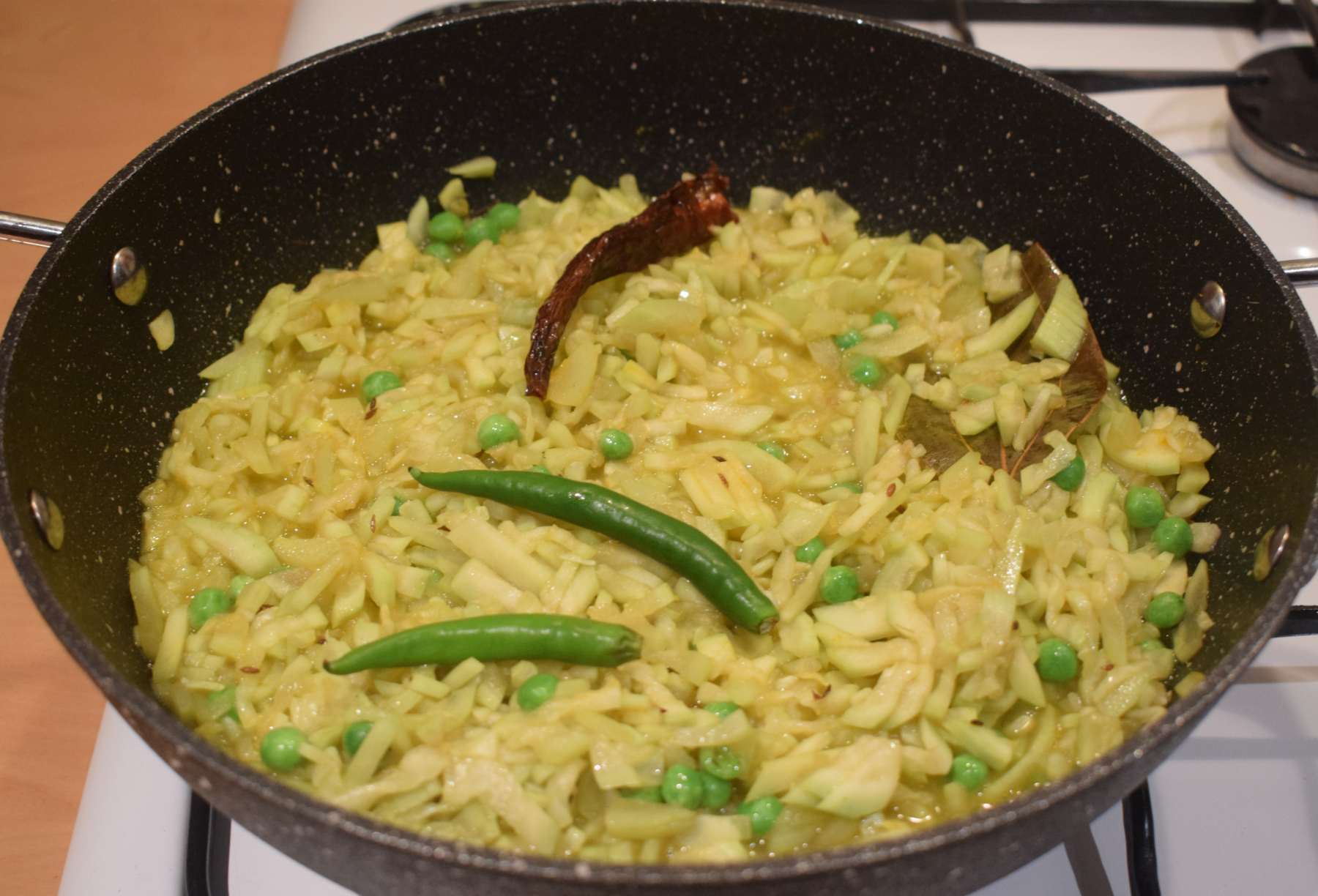
- Take off the lid of the pan and give a stir. Add 1 teaspoon cumin powder and mix it well. Cook it in low flame for another 2-3 minutes.
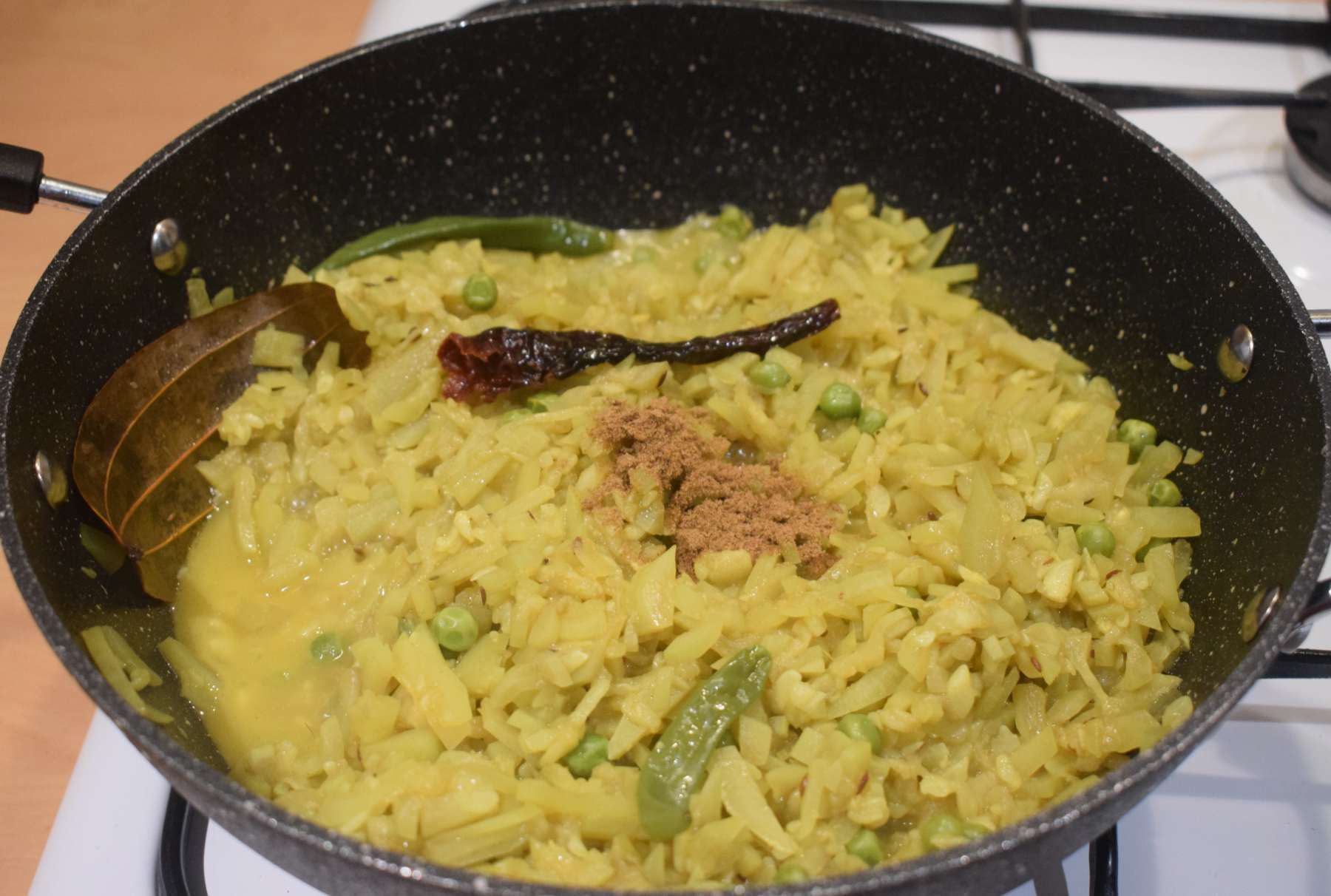
- Add 2 teaspoons sugar, 2-3 tablespoons of chopped coriander leave one by one into the pan and give a nice stir.
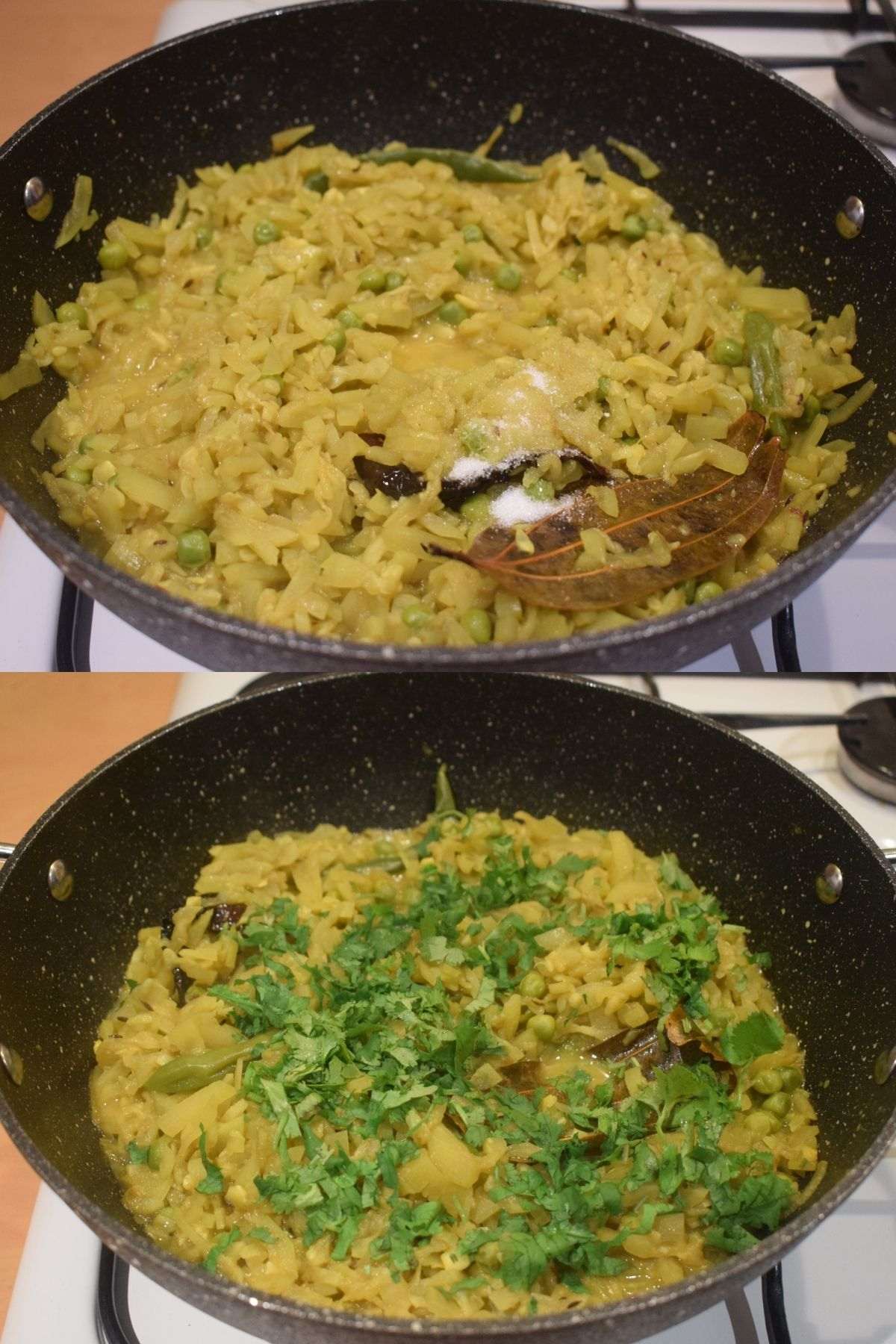
Note: Break few of the fried daler bori into the ghonto to enhance its taste and flavour. - Add the fried daler bori into the pan and give a gentle stir. Break few of them for better flavour. Cover the pan and cook it in low flame for another 5 minutes.
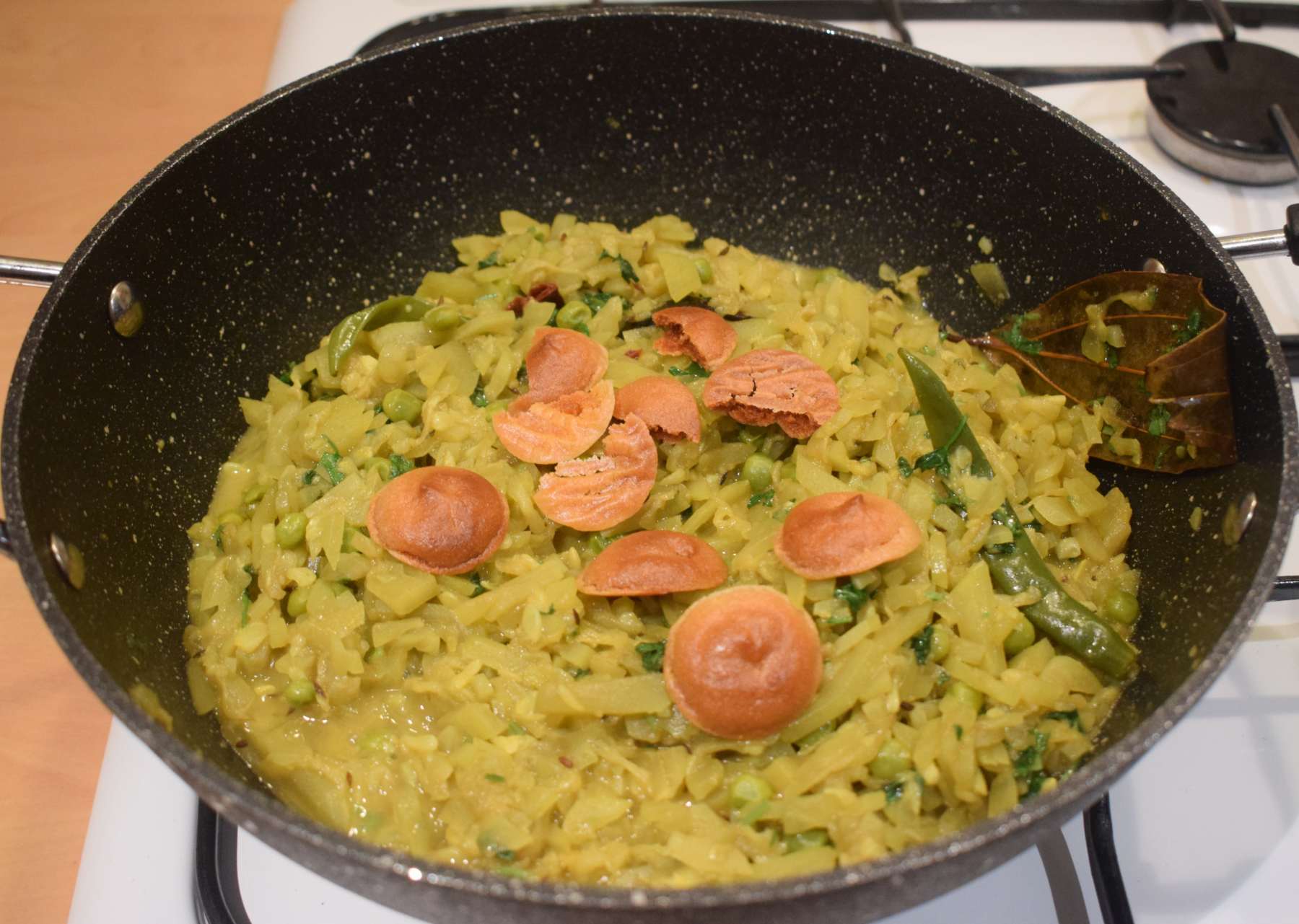
- Switch off the flame and put the pan down.
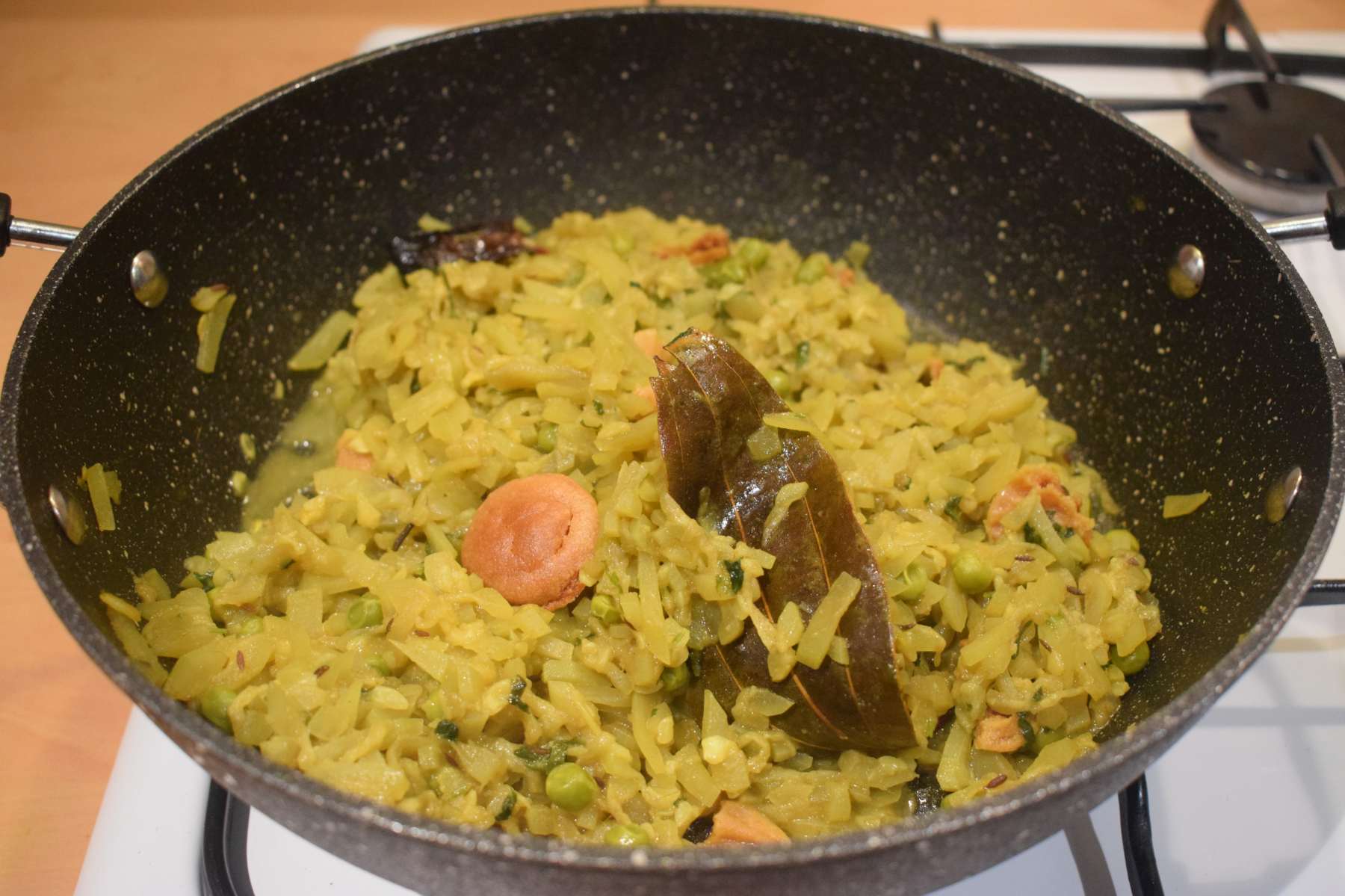
Serving Instruction
Transfer the lau ghonto recipe into a serving bowl. Serve hot or warm with Plain Rice and Dal and enjoy the comforting meal of Bengal.
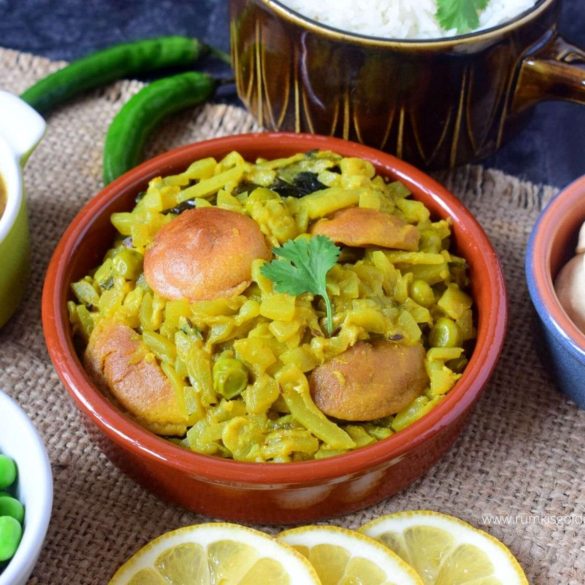
Ingredients
- 1 Kg Bottle gourd (Lau), peeled and cut into thin strips
- 12-15 Baler bori (Sun dried lentil tear droplets)
- ¼ cup Peas, fresh or frozen
- 1 teaspoon Ginger paste
- 2 green Chillies
- 2-3 tablespoons Coriander leaves, chopped
- ½ teaspoon Cumin seeds (Jeera)
- 1 dry red Chilli (Shokno lanka)
- 1 Bay leaf (Tejpatta)
- 1 teaspoon Turmeric powder
- 1 teaspoon Cumin powder
- 2 teaspoons Sugar
- Salt to taste
- 3 tablespoons Mustard oil
Instructions
- Cut the bottle gourd into thin small strips and wash them once. Then drain the water and keep it aside.
- On the other hand, put a pan on flame and allow it to become completely dry.
- Add 3 tablespoons of mustard oil into it. Once the oil is hot, add the daler bori into it and fry them till golden brown and keep them aside.
- In the same pan, add oil if required and add 1 dry red chilli, 1 bay leaf and ½ teaspoon cumin seeds into the pan for tempering and let them crackle.
- Add the bottle gourd pieces into the pan and give a nice stir. Cook it over medium flame for 5 minutes.
- Add 1 teaspoon ginger paste into the pan and mix it well. Cook it in low flame for 2-3 minutes until the raw smell of ginger goes away.
- Add ¼ cup green peas into the pan and give a nice mix.
- Add salt, 1 teaspoon turmeric powder into the pan and mix them nicely.
- Add green chillies into the pan and cover the pan. Cook it in low flame for approximately 20 minutes until the bottle gourd gets cooked completely in its own juice. Stir in between once or twice.
- Take off the lid of the pan and give a stir. Add 1 teaspoon cumin powder and mix it well. Cook it in low flame for another 2-3 minutes.
- Add 2 teaspoons sugar, 2-3 tablespoons of chopped coriander leave one by one into the pan and give a nice stir.
Note: Break few of the fried daler bori into the ghonto to enhance its taste and flavour.
- Add the fried daler bori into the pan and give a gentle stir. Break few of them for better flavour. Cover the pan and cook it in low flame for another 5 minutes.
- Switch off the flame and put the pan down.

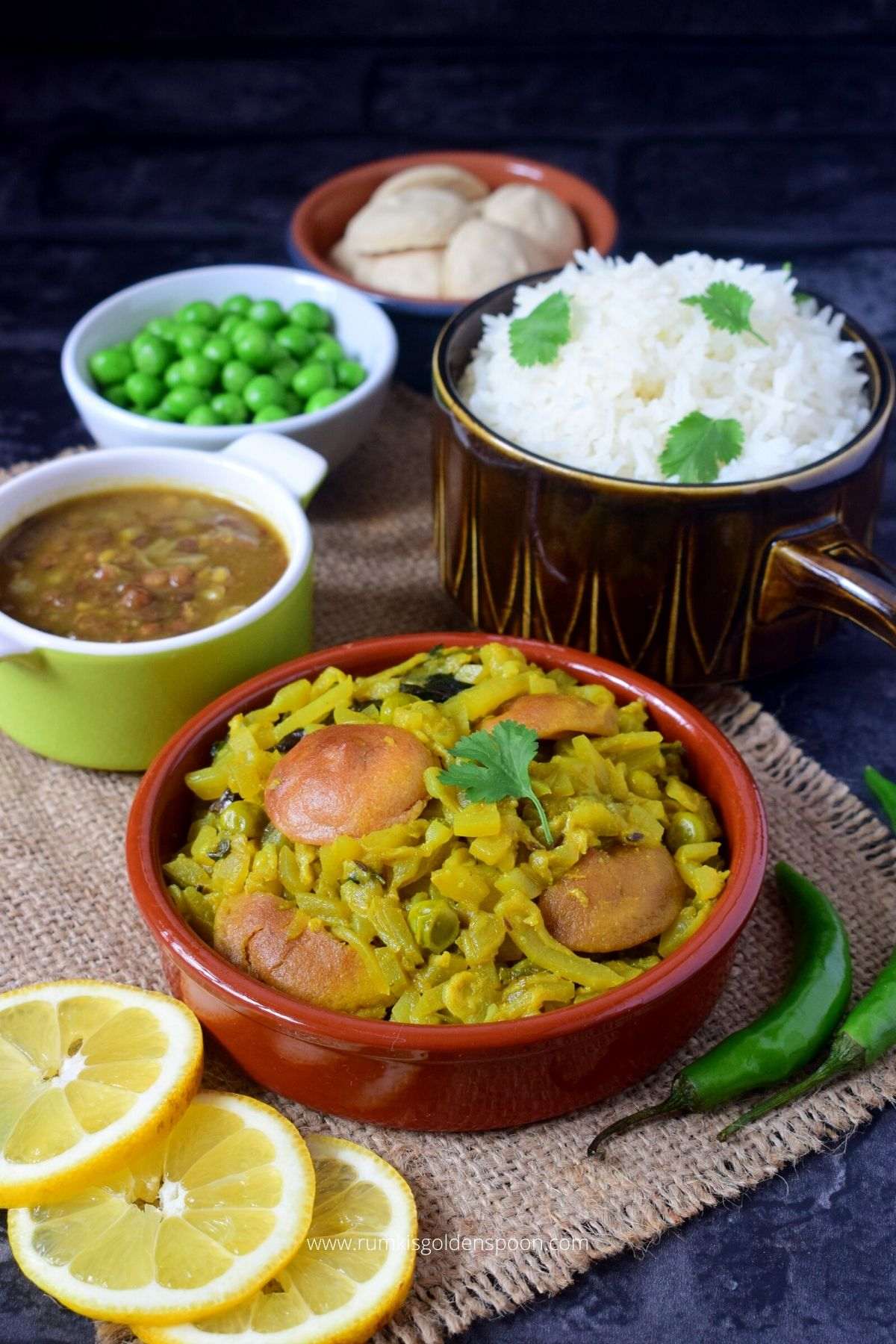
3 comments
[…] 11. Lau ghonto Lau ghonto recipe is an authentic and delectable Bengali niramish recipe that is hugely popular in Bengal. It is a pure comfort dish that is prepared in almost every Bengali house. It is a no onion and no garlic recipe which makes it a perfect dish for niramish days. In this preparation, bottle gourd aka lau is cooked with peas and crispy fried daler bori aka sun-dried lentil tear droplets in minimal spices and coriander leaves. It is a perfect side to accompany with piping hot Steamed Rice and dal. […]
[…] ghonto Bandhakopi ghonto Bori diye lau ghonto Gobindogbhog chal diye lau […]
[…] there in this rich cuisine. Aloo posto, bandhakopi ghonto, kochu bata, mocha ghonto, chanar dalna, lau ghonto etc. are the few finest examples of […]